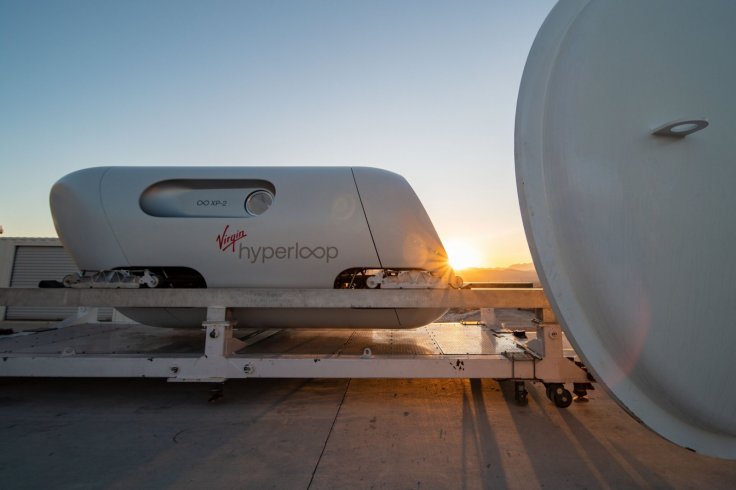World's first human passenger ride on a super-high-speed pod system was successfully tested in Las Vegas, Nevada by Virgin Hyperloop. While the test was critical for safety for transportation technology, maintaining this safety for the pod system that reached 100 miles per hour (nearly 161 kilometer per hour) will remain a challenge, experts said.
The California-based company tested the hyperloop pod Pegasus at its DevLoop test site in Las Vegas. Previously, Virgin Hyperloop more than 400 test runs without human passengers at the site.
The hyperloop system uses electromagnetic levitation under near-vacuum conditions for faster transportation. A trip between New York and Washington would be completed in 30 minutes —twice as fast as a commercial jet flight and four times faster than a high-speed train.

"I can't tell you how often I get asked 'is hyperloop safe?'" Jay Walder, CEO of Virgin Hyperloop said. "With today's passenger testing, we have successfully answered this question, demonstrating that not only can Virgin Hyperloop safely put a person in a pod in a vacuum environment."
The first hyperloop passenger test: https://t.co/nFohRHsZVt pic.twitter.com/CI4Sq7sghY
— Virgin Hyperloop (@virginhyperloop) November 9, 2020
However, experts said that the hyperloop system still has challenges concerning safety and maintaining a vacuum in the tube.
"A hyperloop vehicle will travel much faster than high-speed rail, maybe even reaching 760 mph," Constantine Samaras, associate professor of civil and environmental engineering at Carnegie Mellon University told the Verge. "Maintaining safety at such high speeds is very important, and all of the unforeseen disasters need to be engineered into the system. An earthquake? The vacuum tube breaks? The train somehow punches through the tube? At such high speeds, these events amplify the danger, and so safety has to be paramount."
Another challenge that the hyperloop system has is the ability to maintain a vacuum in the tube, which would be hundreds of miles long. According to the Verge, a hyperloop pod needs to decelerate and stop each time it arrives at a station. Following this, the airlock closes, pressurizes, and opens again, and then the pod needs to exit before another pod arrives. The distance between pods will be determined based on the speed at which this process happens.
Passenger capacity is another problem in the hyperloop system. The U.K.'s High Speed 2 — that would allow trains to reach speeds of up to 250mph — would have the capacity of to transport nearly 20,000 passengers per hour per direction with assuming 18 trains per hour with 1,100 seats, run over a double-track alignment. Using this yardstick, if a hyperloop pod has 50 seats, it would need 400 pods to leave every hour at nine-second headway in a bid to match HS2's capacity. Virgin Hyperloop's Pegasus pod has two seats.









